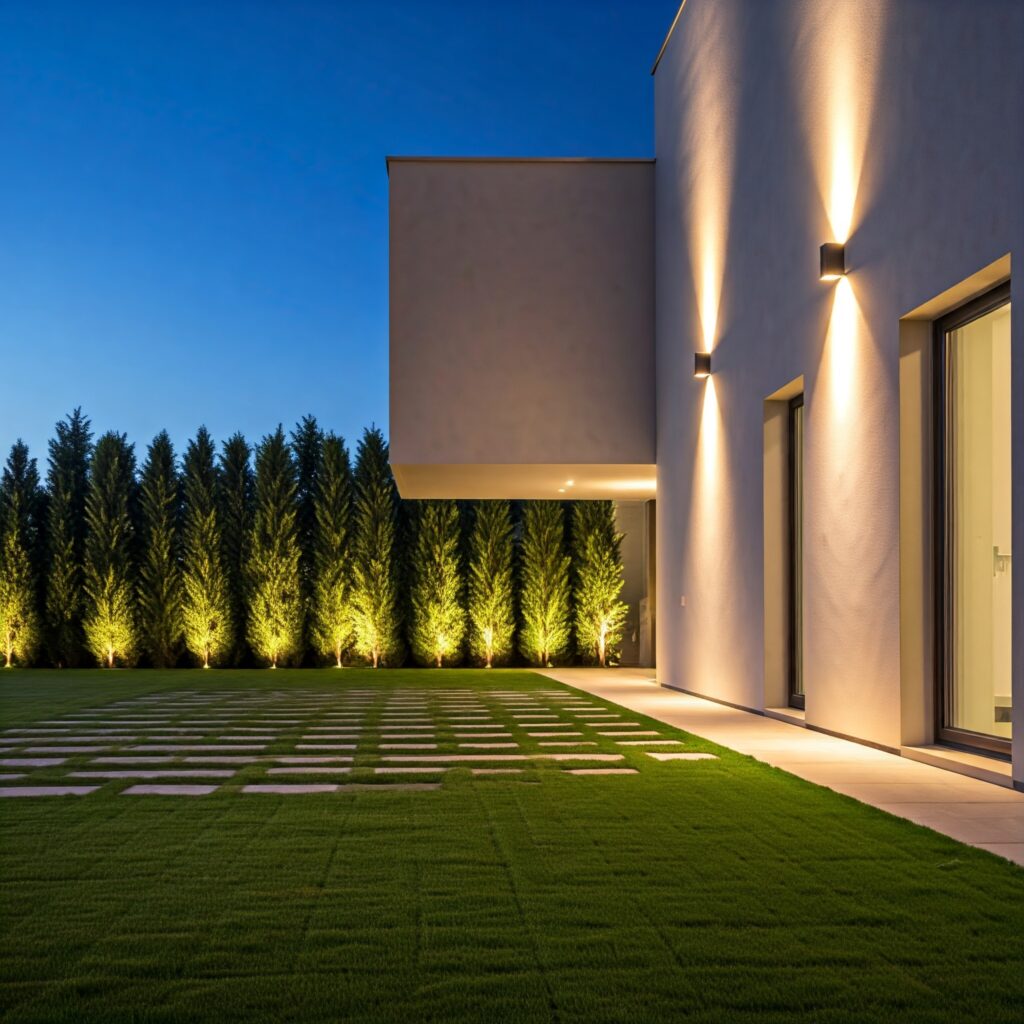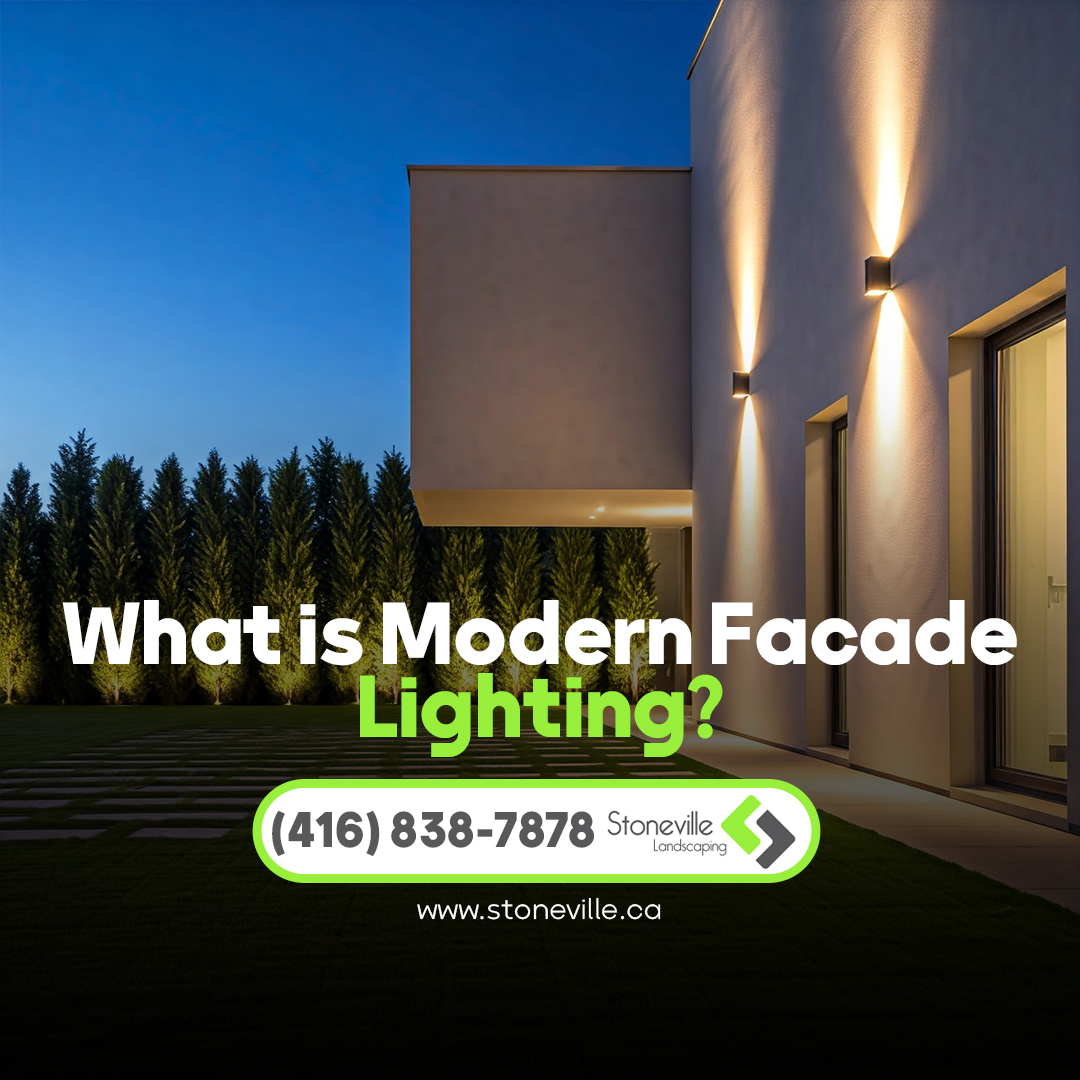Features of modern facade lighting
Using LED technology: LED lights are becoming one of the best options in modern lighting. In addition to low energy consumption, these lights have a long life and the ability to change color.
Minimalist design: In modern facade lighting, a simple and elegant design is usually used, which adds to the beauty of the building and reduces lutter.
Implementation based on the type of materials: lighting should be designed in a way that is compatible with the type of materials used. For example, modern facade lighting of stone and brick buildings should be done with a different perspective.
Creating visual effects: By using proper lighting, different visual effects can be created. For example, a linear light can have on the lines of the building and make them more prominent.
Pay attention to security and safety: In addition to beauty, lighting should also pay attention to safety. The right lights can illuminate dark areas and create a sense of security.

Key points in modern facade lighting
Choosing lights: The right lights are very important based on the type of lighting and the purpose of the idea. Recessed lights, wall lights and LED strips are among the popular options.
Analysis of the environment: From the lighting design, the environment around the building and the effect of light on it should be analyzed. Lighting should be in harmony with the environment and add to its beauty.
More than light: light can be used to highlight certain elements of the building and show them off. Advances in Technology: With advancements in technology, facilities have been created for modern facade lighting of buildings. Using smart systems to control light and color can help improve lighting quality.
Psychological effects of modern facade lighting
Modern facade lighting not only has a visual effect, but also can affect the experience and mental states of people. For example:
Creating a feeling of peace and security: soft and warm lights can create a sense of peace and security among residents and visitors.
Attracting attention and moving curiosity: the use of diverse lights and creative designs can attract people and lead them to the building.
Various modern facade lighting techniques
In modern facade lighting, I can use techniques, each of which can affect the overall design:
Accent lighting: In this technique, light is shone upwards or downwards to highlight specific elements of the building.
Diffuse lighting: In this type of lighting, the light is spread evenly on the facade of the building and creates soft and natural effects.
Linear lighting: This technique involves the use of LED strings or light strips that can be placed along buildings or vertical and horizontal lines.
Lighting coordination design center
The lighting of the modern facade should be designed in such a way that it is in harmony with the overall design of the building and the surrounding environment:
Use of colors: The color of the light can have an effect on the facade of the building. For example, blue and green lights can convey a sense of modernity and relaxation, while warmer lights such as yellow and orange convey a sense of intimacy and warmth.
Adjusting the light: The angle of the light should be adjusted to get the best results at different times of the day and night.
Facade lighting challenges and considerations
Modern facade lighting also comes with challenges:
Costs
It is possible to design and implement lighting systems, so you should pay attention to financial planning.
maintenance
Modern facade lighting of buildings requires maintenance and repair, especially in the use of outdoor lights that are in environmental conditions.
Impact on the environment
Attention should also be paid to the effects of lighting on the environment and animals. Excessively bright lights can harm wildlife or negatively affect the sleep of nearby residents.
The effect of lighting on urban identity
Modern facade lighting of buildings can contribute to urban identity and impact on public space:
Creating Landmarks: Lighting can give buildings and specific urban points and identify them as landmarks. This is especially important in large and densely populated cities, where there are many similar buildings.
Attracting tourists: Beautiful and creative lighting can help attract tourists and visitors. Illuminated serve as nighttime tourist destinations and can help economic areas.
Use of new technologies
With the advancement of technology, there are more possibilities for modern facade lighting:
Smart systems: The use of smart lighting systems that can automatically turn on and off or change color allow designers to adjust lighting according to environmental conditions and time of day.
Lighting: Some modern projects use lighting that gives people or changing environment. This type of lighting can increase users significantly.
Environmental aspects
Façade lighting should also pay attention to environmental and sustainability aspects:
Use of solar energy sources: Using solar energy sources to assist lighting energy systems can reduce energy consumption and costs.
Light reduction: The lighting design should be such that the light shines in addition to the sky and prevents light. This helps to preserve the ecosystem and wildlife.
Successful examples of modern facade lighting
Some successful projects in the field of facade lighting can serve as inspiration models:
Burj Khalifa, Dubai: This tower has become a global icon with its creative lighting and regular light shows.
Golden Gate Bridge, San Francisco: The lighting of this bridge is designed to show its architectural beauty at night and is known as one of the tourist attractions.
New techniques of modern facade lighting
Lighting using LED:
The use of LED lights is very popular due to their high efficiency and low energy consumption in facade lighting.
These lights can be designed in different colors and intensities, giving designers more flexibility to create visual effects.
Fiber optic lighting:
Fiber optics allow designers to make light very specific and placed in places.
This technique can create beautiful effects that can be seen in different ways at night.
Dynamic lighting:
Dynamic lighting systems have the ability to change color and intensity of light throughout the night and can be coordinated with special events or seasons.
This type of lighting can give increasing attractiveness to public spaces and improve the user experience.
Social and economic effects
Increased security:
Proper lighting can increase security in urban areas. Adequate lighting in streets and public places can prevent crimes.
Economic development:
Proper lighting can help attract investment and business in certain areas. Illuminated buildings serve as attractive titles for customers and tourists.
Creating a sense of belonging:
Lighting can help strengthen residents’ sense of belonging to neighborhoods and areas. Creative and beautiful designs can strengthen a place and engage residents in social activities.
Future trends in facade lighting
Sustainability and use of receiving resources:
The trend of increasing attention to environmental issues makes designers look for the use of energy sources in lighting.
The use of solar panels and green technologies is becoming increasingly popular.
Corporate lighting:
Future trends are moving towards product lighting where light reacts to users. This type of lighting can bring unique experiences to visitors.
Use of artificial intelligence:
Artificial intelligence can be used in the design and management of lighting systems. It can help analyze data and optimize energy consumption.






